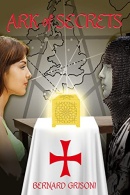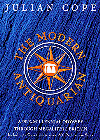<< Feature Articles >> Well temples and springs - the water cult in Nuragic Sardinia
Submitted by SolarMegalith on Sunday, 16 October 2011 Page Views: 8519
Springs and Holy WellsCountry: Italy Region: Sardinia (Sardegna) Type: Holy Well or Sacred SpringInternal Links:
Today we know about 40 well temples which can be divided for two groups basing on their masonry structure. Early water sanctuaries were built of roughly cut stones – a perfect example are Pozzo Sacro Sa Testa (sacred well of Sa Testa, Olbia) and Pozzo Sacro Santa Anastasia (dated for 1300 – 1200 BC, Middle Bronze Age). The later, Iron Age well temples (some of them dated for 900 – 800 BC) were constructed of very accurately cut stones (not necessarily basalt ones) which leave no space between each other in the wall. Example of such structures are Pozzo Sacro Predio Canopoli (Perfugas) and Pozzo Sacro Santa Cristina (Paulilatino). Despite the differences in masonry techniques, all well temples have similar plan. They consist of atrium (sometimes vestibule) which might be of oval (Sa Testa) or rectangular (Canopoli) shape – this was the area were offerings were placed (in Sa Testa the benches are very well preserved) and the ceremonies conducted. From here the stairs lead into the tholos-style chamber containing the sacred well itself. In many cases the well is still filled with water (that is the case in both Santa Cristina and Predio Canopoli). Sometimes the well temple is surrounded with a wall of irregular plan which enclosed the sacred area around the sanctuary (Santa Cristina). In case of Predio Canopoli the well temple is adjacent to megaron-style temple, another significant type of Nuragic cult architecture, the shape of which was probably the result of influence by Greek and Phoenician settlers.
Notably, there is strong evidence that the cult of water in Nuragic water temples did not end with decline of Nuragic cilivization, but continued through Punic and Roman period. In Pozzo Sacro Irru (Perfugas) a satiric Punic mask and Roman glass have been discovered (currently in Museo Paleobotanico e Archeologico in Perfugas), the Roman finds were unearthed also in Pozzo Sacro Sa Testa near Olbia.
Another group of monuments connected with water are springs without underground chambers. The spring is usually protected in a small room made of basalt stones. Some of the most important sites of that type are Li Paladini (Calangianus), Su Lumarzu (Bonorva), s’Ena de s’Olomo (Sindia), Noddule (Nuoro) and Su Cuccuru de Is Arrus near the nuragic village of Abini (Teti). Wells can be also seen as part of nuragic villages, examples are wells in complexes of La Prisciona (Arzachena) and Piscu (Suelli).
Looking at the burned and dry soil of Sardinia it is easy to understand how important water has been for Nuragic people, especially in time of increased warfare based on hit-and-run attacks which forced construction of almost 7000 nuraghi. Although construction of the most impressive well temples is dated for final stage of nuragic civilization, they are one of the most impressive archaeological monuments of Sardinia and should not be omitted by travelers visiting this wonderful island.
Bibliography:
Guido M. 1963. Sardinia. London: Thames and Hudson
Lilliu G. 1997. The Sardinia of the Nuraghi. Novara: Instituto Geografico DeAgostini
Melis P. 2003. The Nuragic Civilization. Sassari: Carlo Delfino Editore
Webster G. 1996. A Prehistory of Sardinia 2300 – 500 BC. Sheffield: Sheffield Academic Press
<< 'Oh not bloody mammoth again!'
The Megalithic Portal Mysteries Forum Grand Map Dowsing Competition >>






 We would like to know more about this location. Please feel free to add a brief description and any relevant information in your own language.
We would like to know more about this location. Please feel free to add a brief description and any relevant information in your own language. Wir möchten mehr über diese Stätte erfahren. Bitte zögern Sie nicht, eine kurze Beschreibung und relevante Informationen in Deutsch hinzuzufügen.
Wir möchten mehr über diese Stätte erfahren. Bitte zögern Sie nicht, eine kurze Beschreibung und relevante Informationen in Deutsch hinzuzufügen. Nous aimerions en savoir encore un peu sur les lieux. S'il vous plaît n'hesitez pas à ajouter une courte description et tous les renseignements pertinents dans votre propre langue.
Nous aimerions en savoir encore un peu sur les lieux. S'il vous plaît n'hesitez pas à ajouter une courte description et tous les renseignements pertinents dans votre propre langue. Quisieramos informarnos un poco más de las lugares. No dude en añadir una breve descripción y otros datos relevantes en su propio idioma.
Quisieramos informarnos un poco más de las lugares. No dude en añadir una breve descripción y otros datos relevantes en su propio idioma.